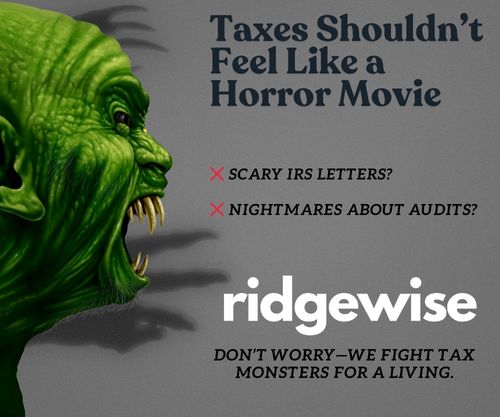Managing costs in retail isn’t just about cutting expenses; it’s about strategically optimizing every dollar spent to maximize profitability. In a competitive market, understanding how to manage and control costs can make the difference between a thriving business and one that’s struggling to stay afloat.
I’ve seen firsthand how effective cost management can transform a retail operation. From negotiating better supplier deals to optimizing inventory levels and reducing waste, there are numerous strategies that can help retailers keep their costs in check without compromising on quality or customer satisfaction. Let’s dive into the key aspects of retail cost management and explore how you can implement these strategies to boost your bottom line.
Understanding Retail Cost Management
Retail cost management is critical for achieving and maintaining profitability in a retail operation. Effective strategies can significantly influence a retailer’s financial health.
What Is Retail Cost Management?
Retail cost management involves the identification, analysis, and optimization of costs incurred in retail operations. It includes everything from purchasing inventory to managing store operations. By efficiently managing these costs, retailers can increase profit margins.
The Importance of Cost Management in Retail
Effective cost management in retail can reduce unnecessary expenses and improve overall efficiency. When a retailer negotiates better deals with suppliers, optimizes inventory levels, and minimizes waste, it directly impacts the bottom line. Investing in poor cost management leads to inflated operational expenses, which can erode profit margins and affect the competitiveness of the business.
Strategies for Effective Cost Control
Effective cost control ensures a retail business remains profitable and competitive. This section explores key strategies to manage costs efficiently.
Reducing Overhead Costs
Overhead costs can drain resources if left unchecked. Focus on monitoring utilities, rent, and administrative expenses. Negotiating better lease terms and implementing energy-efficient practices cuts costs. Regularly auditing and eliminating unnecessary expenses helps in maintaining lean operations.
Optimizing Supply Chain Expenses
Supply chain expenses significantly impact overall costs. Streamlining inventory management through better forecasting and relationships with suppliers reduces excess and stockouts. Negotiating bulk purchase discounts and diversifying suppliers minimizes risk. Using third-party logistics can cut transport and storage costs.
Implementing Technology Solutions
Technology solutions enhance efficiency and reduce costs. Investing in inventory management systems tracks stock levels and reduces overordering. Point-of-sale systems provide sales insights and help manage promotions effectively. Using data analytics identifies cost-saving opportunities and areas for improvement.
Challenges in Retail Cost Management
Retail cost management poses several challenges. Addressing these is vital for maintaining profitability and competitiveness.
Fluctuating Market Prices
Fluctuating market prices create unpredictability. For example, raw materials and commodities often see price swings due to global demand, supply chain disruptions, or geopolitical events. These fluctuations impact inventory costs and pricing strategies. Maintaining profitability becomes complex when prices rise unexpectedly. Retailers must adopt dynamic pricing models, closely monitor market trends, and diversify suppliers to mitigate risk.
Managing Labor Costs
Managing labor costs affects retail profitability significantly. Labor expenses, including wages, benefits, and compliance costs, contribute to operational costs. Seasonal demand spikes necessitate hiring temporary staff, increasing payroll expenses. Efficient scheduling and automated workforce management systems help control labor costs. Investing in employee training improves productivity, reducing the need for overtime and minimizing turnover.
Retail Cost Management Best Practices
Effective retail cost management ensures profitability and competitiveness. Key best practices like regular audits and employee training can optimize operations.
Regular Audit and Monitoring
Regular audits identify areas to reduce costs and improve efficiency. I perform monthly audits to track spending patterns, ensuring alignment with budget goals. Quarterly audits help assess long-term trends and reveal broader inefficiencies. I use software tools to automate data collection, making the audit process more accurate and less time-consuming. By monitoring inventory levels closely, I prevent overstocking and understocking, which can lead to increased holding costs or lost sales.
Employee Training and Engagement
Employee training enhances productivity and reduces errors, both of which lower costs. I conduct regular training sessions on cost-saving techniques and operational best practices. Training programs include modules on inventory management, customer service, and efficient use of store resources. Engaging employees with regular feedback sessions helps improve their performance and foster a cost-conscious culture. When staff members understand the impact of their actions on the bottom line, they’re more likely to collaborate to control costs effectively.
Case Studies
Effective retail cost management is crucial for enhancing profitability. Real-world examples demonstrate the practical application of these strategies.
Success Stories of Cost Management in Retail
Costco achieved significant savings by optimizing their inventory management. They employed advanced data analytics to forecast demand accurately, reducing excess stock by 15%. By negotiating long-term contracts with suppliers, they secured lower prices, resulting in a 10% reduction in procurement costs.
Walmart introduced automation in their supply chain operations. Automation allowed real-time monitoring of stock levels, decreasing instances of overstocking and understocking by 20%. Consequently, they improved their cash flow and reduced storage costs.
Lessons Learned from Failed Strategies
A regional grocery chain faced financial losses due to inadequate cost management. They overestimated demand, resulting in 25% of their perishable goods expiring before sale. A lack of automated systems to track inventory exacerbated this issue, causing a significant waste of resources.
Another retailer attempted to cut costs by reducing employee training programs. This led to a rise in operational errors and customer dissatisfaction. The savings from reduced training didn’t offset the increased costs from mistakes and lost sales.
Conclusion
Effective retail cost management is essential for maintaining profitability and staying competitive. By focusing on strategies like supplier negotiations, inventory management, and waste reduction, retailers can significantly cut costs. Regular audits and automation tools can further streamline operations and uncover new cost-saving opportunities. Employee training shouldn’t be overlooked as it enhances productivity and fosters a cost-conscious culture. Real-world examples from industry giants like Costco and Walmart clearly show the advantages of optimized inventory and automation. Learning from both successful and failed strategies will guide retailers in making informed decisions for sustainable growth.




